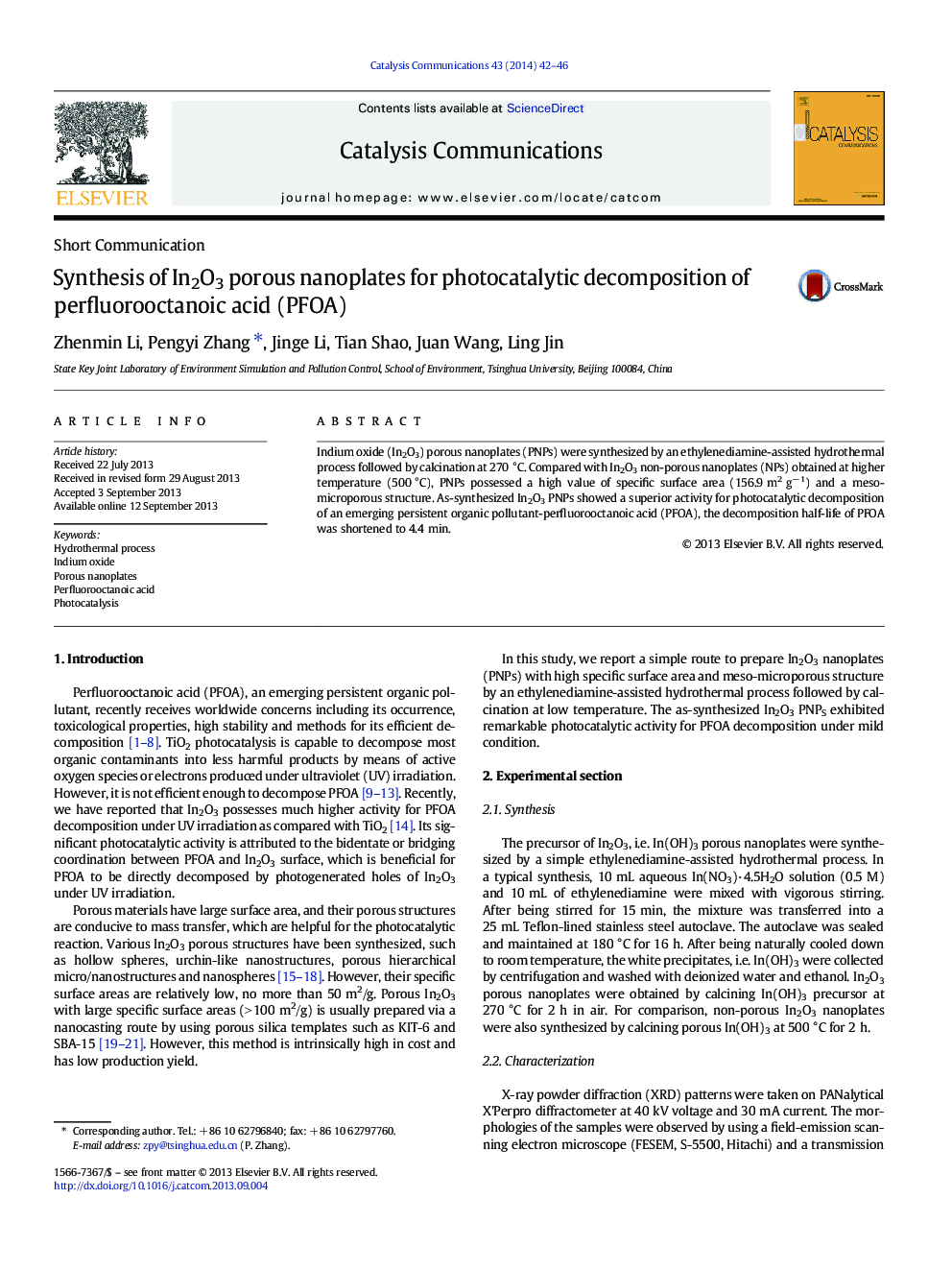| Article ID | Journal | Published Year | Pages | File Type |
|---|---|---|---|---|
| 50408 | Catalysis Communications | 2014 | 5 Pages |
•In(OH)3 porous nanoplates synthesized via a hydrothermal process•Porous In2O3 obtained by calcining In(OH)3 nanoplates at 270 °C•In2O3 nanoplates possessed a specific surface area of 156.9 m2/g.•Porous In2O3 showed a high activity to decompose PFOA.
Indium oxide (In2O3) porous nanoplates (PNPs) were synthesized by an ethylenediamine-assisted hydrothermal process followed by calcination at 270 °C. Compared with In2O3 non-porous nanoplates (NPs) obtained at higher temperature (500 °C), PNPs possessed a high value of specific surface area (156.9 m2 g− 1) and a meso-microporous structure. As-synthesized In2O3 PNPs showed a superior activity for photocatalytic decomposition of an emerging persistent organic pollutant-perfluorooctanoic acid (PFOA), the decomposition half-life of PFOA was shortened to 4.4 min.
